Constrained Optimization Demystified
Explained with a Simple Example

1 Introduction
Have you ever wondered what constrained optimization problems are?
Often, the word constrained optimization is used as everyone knows what it is.
But it may not be so apparent for people who have not been exposed to such terminology before.
If you like to understand constrained optimization and how to approach such problems, you are in the right place.
I’ll demystify it for you.
2 What is a constrained optimization problem?
Suppose you are driving a car on a mountain road. You want to climb as high as possible to view the moon better. But you don’t want to go off-road and cannot fly to the moon.

So, we aim for the highest position while satisfying the constraint that the car must be on the road.
First and foremost, this is an optimization problem.
An optimization problem can be either maximization or minimization, depending on how we formulate the problem.
Since we are maximizing the car’s height (altitude) position, our problem can be called an optimization problem.
Next, the problem has a constraint that we must satisfy.
In this example problem, the car must be on the road, which is a constraint (a condition we must satisfy).
We are optimizing (maximizing) the height position of the car with the constraint that the car must be on the road.
As such, this is an example of a constrained optimization problem.
But how do we tackle such problems?
3 Contour lines — equal height locations
Where is the highest position on the road?
To estimate the answer, let’s draw contour lines to see where the highest road position might be.

The thick black horizontal lines in the picture indicate equal height locations called contour lines.
There is a constant height difference between the neighboring contour lines for ease of viewing.
To make it clear, let’s draw heights (meters) in red:

The dotted vertical lines indicate the direction the height increases or decreases.
The blue arrows show the direction of the height changes:
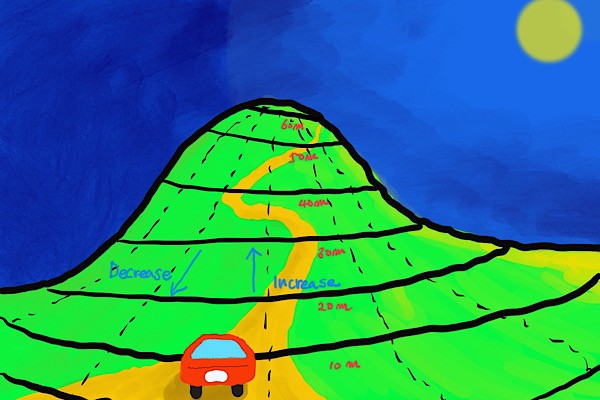
In 2D, it would look like the following.
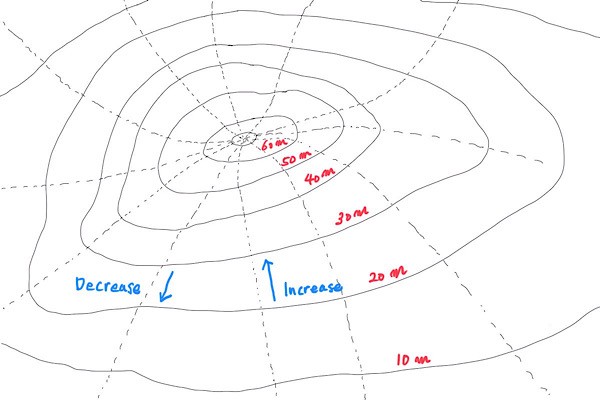
4 Contour line equation
Now that we know what contour lines look like, let’s mathematically define them.
Let
The height of a contour line is constant. For example, a contour line with 50 meters in height satisfies the following equation.
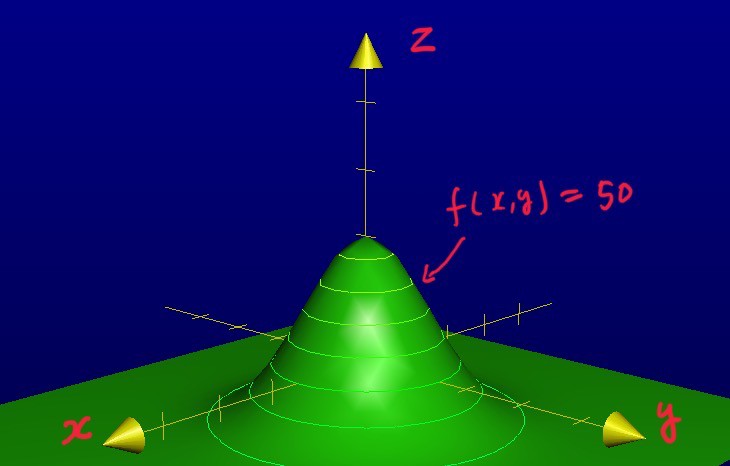
When mathematically defined, there can be infinite numbers of contours. For example, a contour can be for
In general,
As such, there is no rule that a constant height difference must separate the nearest contours. It was easier to see in the picture by separating neighboring contours by the constant height difference.
As our objective is to find the highest contour on the road, we need to define what it means to be on the road mathematically.
5 The constraint — the car must be on the road
Let us also draw a road line, which tells us where we can be.

In 2D bird view, it looks like the below. The road is missing the highest peak of the mountain.
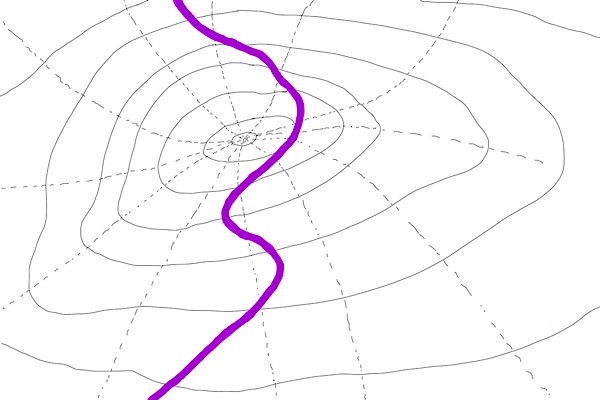
For simplicity, we assume that the car is a point
As such, the constraint can be defined “the distance from the car position (x, y) to the road line must be zero”.
Let’s express the constraint with a function that returns the distance from the road to a position
Now, we can express the constraint as follows:
More generally, we can express a constraint as a function that returns a constant
However, we can always rewrite it by moving the constant to the left-hand side of the equation.
Therefore, using
6 The constrained optimization in math
Our constrained optimization problem is to maximize the function
In some other scenarios, an optimization could be a minimization problem.
The word extremum means either maximum or minimum.
Therefore, constrained optimization is to find an extremum of a function while satisfying one or more constraints.
I hope that the meaning of constrained optimization is clear to you now.
Lastly, let’s get some intuition on how to solve the constrained optimization problem.
7 Intuition on how to solve the constrained optimization problem
Intuitively, we know that the maximum height while on the road is given at the position indicated by the red arrow in the diagram below.
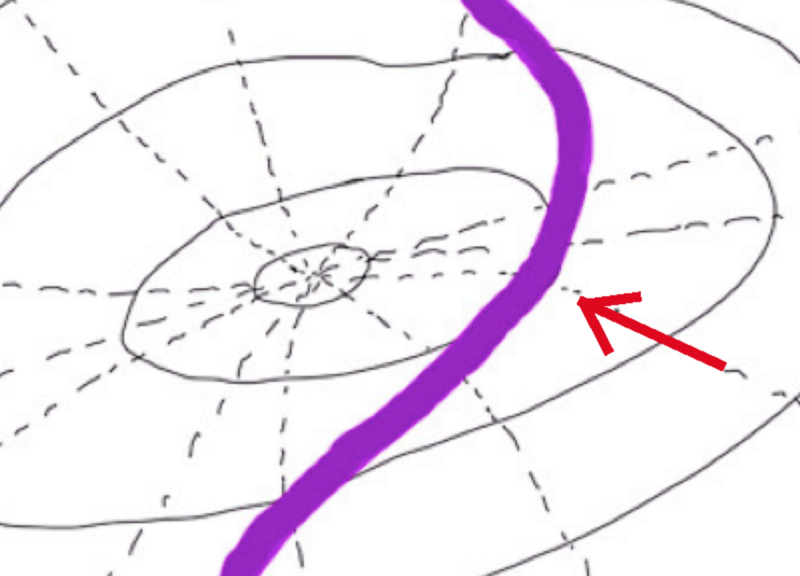
For a position
If they are not in parallel,
For example, the point indicated by the blue arrow is a case where the road and the contour are not parallel.
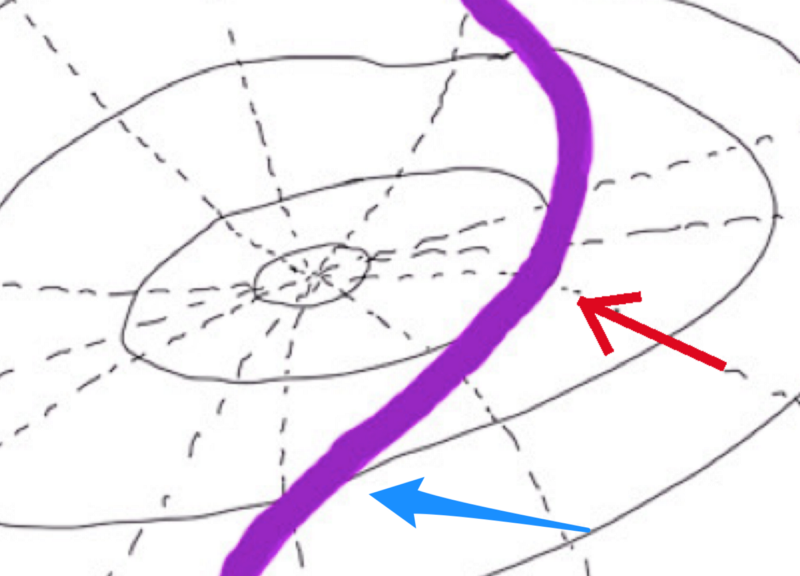
So, finding such a position
To solve this mathematically, we need the concept of the Lagrange multiplier.
If interested, please read this article on the Lagrange multiplier.